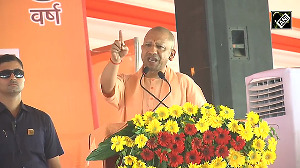Passenger vehicle dispatches in India from factories to dealers rose to record levels at over 43 lakh units in FY25, with utility vehicles accounting for 65 per cent of the total sales in the segment, industry body SIAM said on Tuesday.

Passenger vehicle (PV) dispatches rose to 43,01,848 units in the last fiscal year, marking a 2 per cent increase compared to 42,18,750 units in FY 2023-24.
The high base effect of FY24 resulted in moderate growth last fiscal year, the Society of Indian Automobile Manufacturers (SIAM) said in a statement.
Utility vehicles continued to drive growth, now contributing 65 per cent of total passenger vehicle sales in FY25, up from around 60 per cent in FY24, it added.
Utility vehicle sales grew 11 per cent to 27,97,229 units in FY25 as compared to 25,20,691 units in FY24.

In comparison, passenger cars saw a dip of 13 per cent to 13,53,287 units as against 15,48,947 units in FY24.
The passenger vehicle segment also recorded its highest-ever exports in FY25, reaching 0.77 million units, a 15 per cent increase compared to FY24, SIAM said.
Growth in exports has been driven by the demand of global models being manufactured in the country, it added.
Two-wheeler dispatches to dealers rose 9 per cent to 196,07,332 units in the last fiscal year, up from 1,79,74,365 units in FY24.
Improved rural demand and resurgence in consumer confidence are helping the segment to recover, SIAM stated.
Growth in the two-wheeler segment is led by scooters due to improved rural and semi-urban connectivity and the availability of newer models with enhanced features, it added.
It is noteworthy that the share of EVs in overall two-wheelers has crossed the 6 per cent mark in 2024-25 fiscal, the industry body stated.
Besides, two-wheeler exports registered a good growth of 21 per cent last fiscal as compared to FY24.

Total commercial vehicle wholesales declined 1 per cent last fiscal year to 956,671 units as against 968,770 units in 2023-24 fiscal.
Three-wheeler dispatches rose 7 per cent to 741,420 units as compared to 694,801 units in FY24.
"The Indian automobile industry continued its steady performance in FY25, driven by healthy demand, infrastructure investments, supportive government policies, and continued emphasis on sustainable mobility," SIAM president Shailesh Chandra said.
Passenger vehicles and three-wheeler witnessed a moderate growth on account of the high base effect but saw the highest-ever sales in these categories, while the two-wheeler segment registered strong growth, he added.
However, commercial vehicles witnessed a slight degrowth in the FY2024- 25, though performance in recent months has been comparatively better, Chandra said.
"On the exports front, good recovery is seen across all segments, particularly passenger vehicles and two-wheeler, reflecting improved global demand and India's growing competitiveness," he noted.
"Looking ahead, the backdrop of stable policy environment, along with recent measures such as reforms in personal income tax and RBI's rate cuts, will help in supporting consumer confidence and demand across segments," Chandra said.
Overall sales across categories rose 7 per cent to 2,56,07,391 units last fiscal as against 2,38,57,411 units in FY24.
In March, passenger vehicle dispatches rose 4 per cent year-on-year to 381,358 units.
Two-wheeler sales were up 11 per cent year-on-year to 16,56,939 units, while three-wheeler dispatches rose 10 per cent to 62,813 units as compared to March 2024.
On the growth outlook for the current fiscal year, SIAM notes all segments are expected to continue with the growth momentum, building on the robust performance of recent years due to stable macroeconomic conditions, proactive government policies, and infrastructure spending by the government.
A normal monsoon, as currently forecasted for 2025, is expected to support broader economic activity, especially in rural and semi-urban regions, which would be a tailwind for auto sector demand, it added.
The sector will also benefit from the reforms in the personal income tax announced in the recent Union Budget of 2025-26, which has been followed by two back-to-back rate cuts by the RBI, SIAM said.
These measures would help in creating demand by increased accessibility of vehicle financing, it added.
Besides, export demand in key markets of interest, such as Africa and neighbouring countries, is likely to continue as 'Made in India' vehicles are gaining traction, SIAM said.
"Overall, the automobile industry will closely monitor macroeconomic factors and global geopolitics, which will determine the key demand conditions and supply chain dynamics going forward," it added.











 © 2025
© 2025